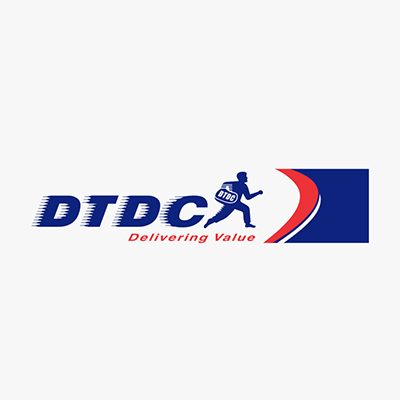For Indian logistics provider DTDC Express Ltd (DTDC), the use of technology to deliver efficiencies is key to its success. DTDC provides logistics services across India and global connectivity through international aggregators. “DTDC is well known across India—not just in large cities such as Mumbai and Delhi, but in smaller towns where there is a DTDC touchpoint thanks to our large franchisee network. Our technology strategy must support this network alongside DTDC’s own operations,” says Santosh Abbimane, chief financial and transformation officer at DTDC Express Ltd.

The ease of use of SAP BRIM and the AWS Cloud meant we could complete our migration remotely, without significant downtime.”
Santosh Abbimane
Chief Financial and Transformation Officer, DTDC Express
Investing in Digital Transformation to Meet Changing Business Requirements
DTDC began a digital transformation program to improve both customer-facing and internal operations. The business introduced a mobile app to track first and last mile delivery, which includes recording package pickups. As a result, it started accumulating massive amounts of operations data. It also faced new invoicing compliance guidelines with the evolution of India’s Goods and Services Tax.
DTDC’s management sought to improve accounting accuracy and customer service levels as part of digital transformation and decided to implement SAP Billing and Revenue Innovation Management (SAP BRIM). They opted for a cloud-native deployment as SAP BRIM is a large platform requiring scalable compute resources.
To host SAP BRIM, DTDC chose Amazon Web Services (AWS). The scalability, cost-effectiveness, and partner ecosystem AWS offered made it the preferred option. DTDC was already running SAP ERP Central Component (SAP ECC) on premises and migrated SAP ECC to AWS, to achieve synergies from having integrated applications on the same cloud platform.
Improving Billing and Reconciliation with SAP on AWS
The SAP BRIM project began just as the pandemic took hold in India. Nevertheless, DTDC was able to implement the platform and migrate SAP ECC to AWS in less than a year. “The ease of use of SAP BRIM and the AWS Cloud meant we could complete our migration remotely, without significant downtime,” says Santosh.
SAP BRIM is now a single source of truth for DTDC’s customers’ master and invoicing data. Data is ported from SAP BRIM to SAP ECC to create profit and loss statements and balance sheets, generating a seamless and real-time revenue/accounting system. The business is using Amazon Elastic Compute Cloud (Amazon EC2) instances with Amazon Simple Storage Service (Amazon S3) to support SAP BRIM and SAP ECC.
Implementing Self-Service Reporting Tools
In tandem with the SAP implementation and migration, DTDC built a data warehouse using Amazon Redshift for revenue analytics. Transactional data flows directly from SAP BRIM to Amazon Redshift, where DTDC has deployed Tableau as a user interface for reporting. “The ability to integrate Tableau with Amazon Redshift, and the simplicity of these reporting tools, provide value to our users while remaining cost-effective for the business,” Santosh says.
DTDC considers democratization of data access one of the greatest achievements of its revenue analytics project; employees can now set custom parameters to create and run their own reports. Team members in cross-sectional roles—such as sales, operations, and finance—can generate analyses as needed to perform their duties. They can also track events, and their impacts on yield, on a daily or weekly basis rather than waiting for month-end analysis. This provides a more up-to-date understanding of their position and allows management to make informed decisions quickly.
In working with AWS, DTDC implemented an automated revenue recognition model using Amazon Redshift snapshots to streamline month-end closing. Teams can generate revenue reports for a set period the day after invoicing closes, as opposed to several days, to aggregate data and make the required calculations. “We believe with this project we will be able to save time and effort. We’ll also improve efficiency as we no longer rely on various individuals to analyze spreadsheets and arrive at a month-end number,” Santosh explains.
Lowering Response Times with Granular View of Shipment Status
In addition to self-service reports, DTDC employees can now drill down to the level of single consignments to investigate issues. Tracing the cause of issues was much more complex before, and always involved IT support. Santosh says, “If a customer or franchisee comes to us with a complaint about a shipment, any team member can bring up the specific consignment and explain what occurred or initiate a resolution process. Our response times in these situations, internally and with partners, have improved.”
Furthermore, because the IT team no longer spends time creating queries on request, it can focus on other initiatives. In 2021, for example, it implemented an AWS Landing Zone to bolster security and ensure a solid cloud foundation based on AWS best practices.
Preparing Architecture to Scale in a Cost-Effective Way
DTDC recently engaged the AWS Data Lab to evaluate its architecture to scale cost-effectively. “It’s not about the lowest cost, but rather ensuring our unit cost decreases with scale,” Santosh elaborates.
Overall, DTDC appreciates the flexibility it has gained on AWS to aggregate business components in different ways and use revenue analytics to see what’s working. “It’s all about flexibility and agile reactions to the industry and market. On the AWS Cloud, we can move faster and remain closer to what’s happening with our customers and business,” concludes Santosh.

